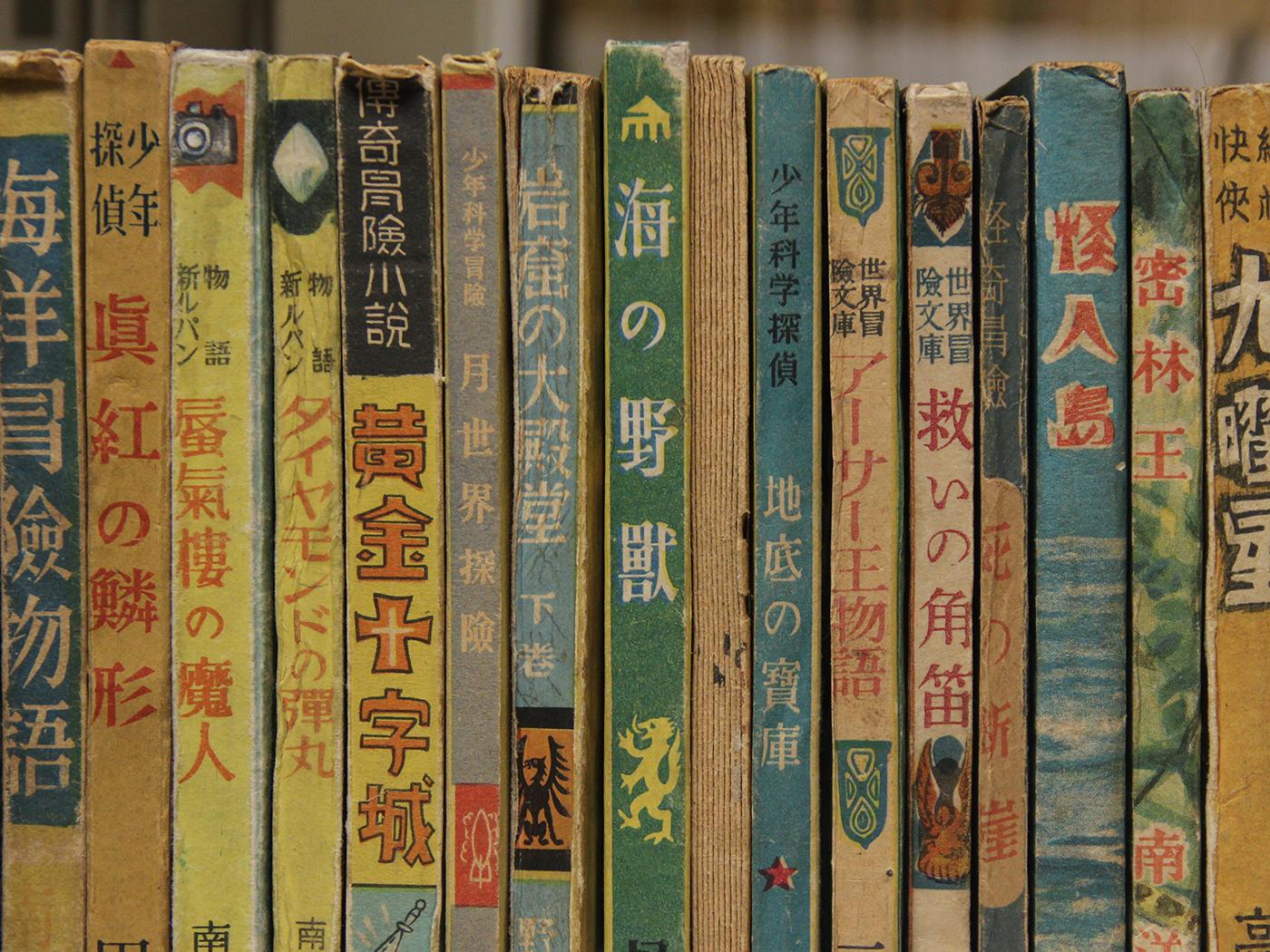Postwar Japan

The Postwar Japan collections cover the years following the end of World War II through the years of the Occupation of Japan. Of particular note is the Gordon W. Prange Collection, the most comprehensive archive in the world of Japanese print publications issued during the early years of the Occupation of Japan, 1945-1949. These books, magazines, newspapers, posters, maps and more were subjected to censorship by the Allied Forces. They bear censorship markings ranging from check-in and examination dates to deletions, suppression and other changes. The Collection was named for the late Gordon W. Prange, who was instrumental in bringing the materials to the University of Maryland.
Collection Holdings
- Censored materials
- Newspapers
- Magazines
- Books
- Oral histories
Research Guides
Access
This material is non-circulating and only accessible in the Maryland Room in Hornbake Library. Some material is available digitally.
Contact

Kana Jenkins
Exhibitions
Visit our galleries in the Hornbake and Michelle Smith Performing Arts Libraries for current exhibitions and explore digital exhibitions online.
Research Awards
Each year, research grants are awarded to those studying the period of the Allied Occupation of Japan and its aftermath, 1945-1960. Learn more about the award and past recipients.
Donations
We accept donations related to the Occupation of Japan as well as contributions to one of our unique gift funds.
The Gordon W. Prange Collection
Gordon W. Prange
Gordon W. Prange was born in Pomeroy, Iowa on July 16, 1910. He studied at the University of Iowa, receiving his Ph.D. in 1937. That same year, he began his teaching career as a professor of history at the University of Maryland.
In 1942, he was granted a leave of absence from the University to embark on a wartime career as an officer in the United States Navy. He was sent to Japan in 1945 as a member of the American Occupation Forces. He completed his Navy service soon thereafter, but continued in Japan as a civilian from 1946 to 1951 as chief of General Douglas MacArthur's 100-person historical staff.
When censorship of the Japanese media by Allied Forces was lifted in 1949 and the Civil Censorship Detachment disestablished, Professor Prange, recognizing the historical significance of the CCD material, arranged for its shipment to the University of Maryland. The materials arrived at the University in 1950. On September 15, 1978, the Board of Regents of the University of Maryland passed a motion to name the collection the "Gordon W. Prange Collection: The Allied Presence in Japan, 1945-1952." A transcript of Gordon Prange's address at the dedication ceremony on May 6, 1979 can be found here.
Professor Prange continued to teach at the University of Maryland until several months before his death on May 15, 1980. He is still remembered by alumni as one of the University's truly great teachers and is well known today for major works on the war in the Pacific, particularly the film Tora! Tora! Tora!, and the books Miracle at Midway and At Dawn We Slept.
Civil Censorship Detachment
On August 15, 1945 Japan surrendered to the Allied Forces. General MacArthur arrived in Japan on August 30, 1945. Within three weeks, General MacArthur's General Headquarters (GHQ) of the Supreme Commander for the Allied Powers (SCAP) issued a ten-point Press Code for the Japanese news media. The Civil Censorship Detachment (CCD), an operating unit overseen by the Deputy Chief of Staff for Intelligence (G-2) and transferred from the Philippines to Japan at the beginning of the Occupation, was responsible for censorship of civilian communications (mail, telephone, telegraph, film, radio and publications). The CCD operation was brought to a close in November 1949. The holdings of the Prange Collection are the materials that once constituted the publication files of the CCD.
Between October of 1945 and November of 1949, Japanese publishers, including publishing houses, organizations and individuals, were required to submit two copies of their proposed publications to the CCD for review. The publications were submitted in pre-publication form, such as galley proofs or manuscripts, or in published form. Censorship markings were written directly on the publications by CCD examiners, usually in colored pencil, and included CCD classification and accession numbers, date received, Romanized title, proposed circulation and paper type. If a CCD examiner felt that a publication violated the Code for the Japanese Press, he/she translated the objectionable portion into English for review (and final determination of censorship action) by the examiner’s supervisor. One copy of the publication was returned to the publisher with publishing instructions. The second copy was retained as a file copy by the CCD.
Censorship action included deletions, complete suppression, publishing delays and other changes. No indication of censorship could appear in publications, such as blackening out of text or use of ellipses. Type had to be reset or spaces left by the deletions had to be filled with new material. Consequently, the Japanese public was unaware that censorship was in place until well after the occupation ended.
Preservation
The UMD Libraries have invested heavily in organizing, processing, and preserving the Prange Collection. As a result of severe shortages in the post-war years, Japanese publishers were forced to use poor quality, high-acid content paper, and the publications from these years are rapidly deteriorating.
Since the early 1990s, the UMD Libraries have partnered with the National Diet Library of Japan (NDL) to preserve and provide access to the materials in the Prange Collection, which fill a gap in NDL's historical record. Between 1992 and 2001, the Prange magazine and newspaper collections were microfilmed. In 2005, the current project to digitize the 71,000 Prange books began. Major progress has been made toward achieving the UMD Libraries' goal of preserving the entire Collection so that it will be fully accessible.